Yankee Air Museum "Thunder Over Michigan" Airshow 2003
|
It was a brave man who flew into the Vietnam war in a small plane like this
Cessna O-2 Skymaster. A total of 532 were built for the US
Air Force, and used mostly in the "forward air controller" role, hence
the lettering on top of the wings of this one. Forward air
controllers flew low and slow over Vietnam looking for enemy activity,
which often meant hearing themselves being shot at. They would
then call in air support which was lurking close at hand, fire rockets
to mark the enemy position with smoke, and let the big boys pour in some
serious armament. At times O-2s did carry offensive weaponry
like small gatling guns or explosive rockets, but some poor pilots were
forced to fly with nothing more than loudspeakers and pamphlet distribution
equipment in the pointless exercise called "psychological warfare".
The O-2 might have been a bad plane to go to war in, but with two engines
it was better than the single engine O-1 Bird dog, whose pilots were in
a lot of trouble if that engine stopped working.
|
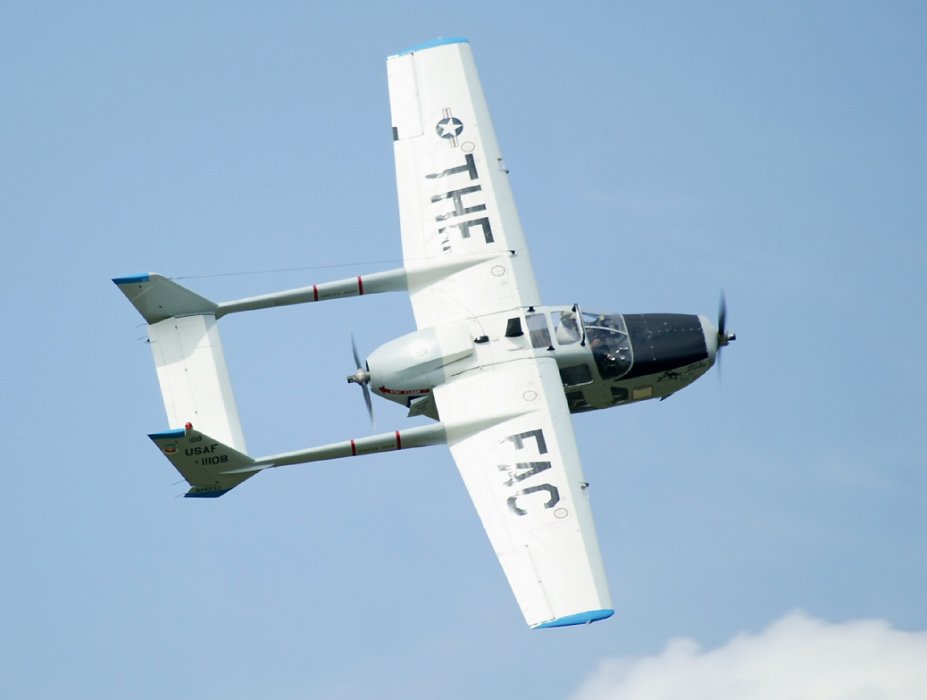
|

|
The S-2 Tracker is a retired US navy anti-submarine aircraft. Here
you can see it in the "dirty" configuration with wheels and tailhook extended.
After finding an enemy submarine the Tracker could attack with torpedoes,
rockets or even a nuclear depth charge.
|
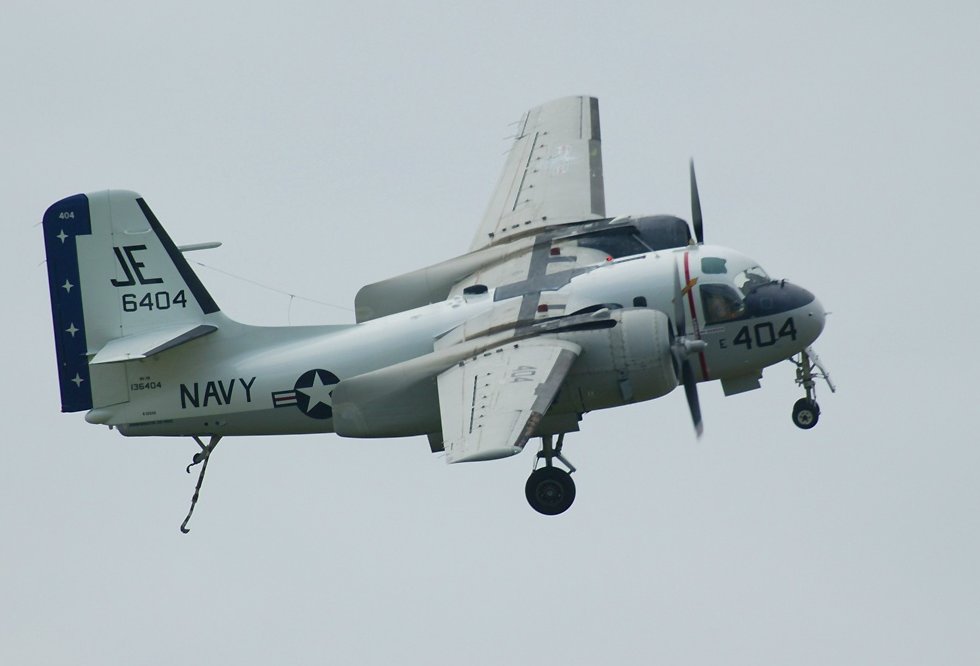 |

|
This is the only Curtiss Helldiver in the world which is still in flying condition.
The Helldiver was a much larger replacement for the Douglas Dauntless dive
bomber. The gunner at his station in the back of the plane
certainly adds something to the photo.
|
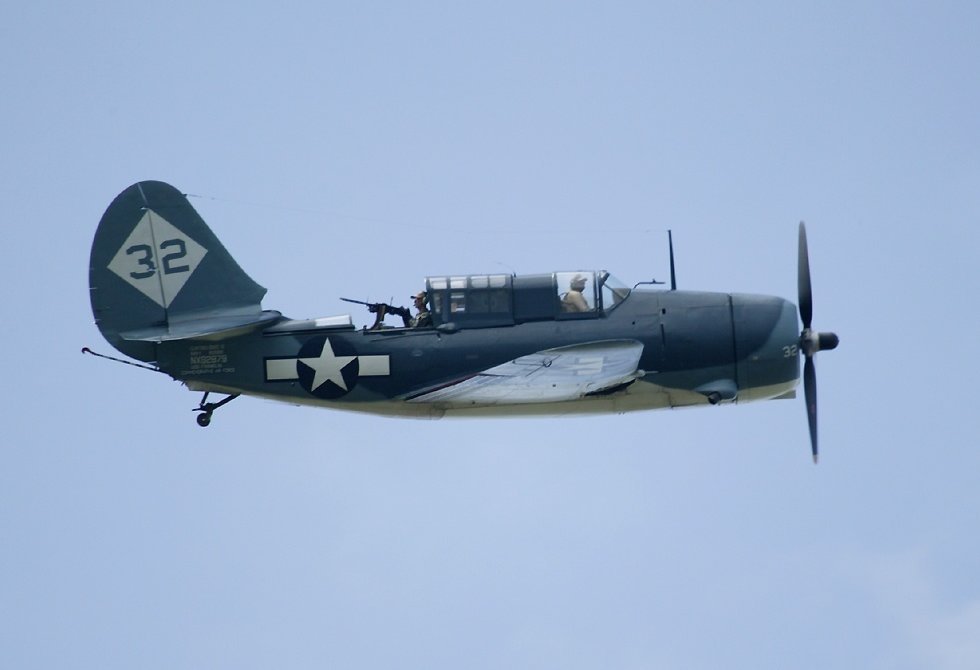
|

|
Two stalwarts of the US navy in world war two, on the top is the F6F Hellcat
and below it is the F4U Corsair. Not too many Hellcats are
flying nowadays, but Corsairs are fairly common, doubtless due in part
to its long production run, from 1942 to 1952, with over 12,500 produced.
|
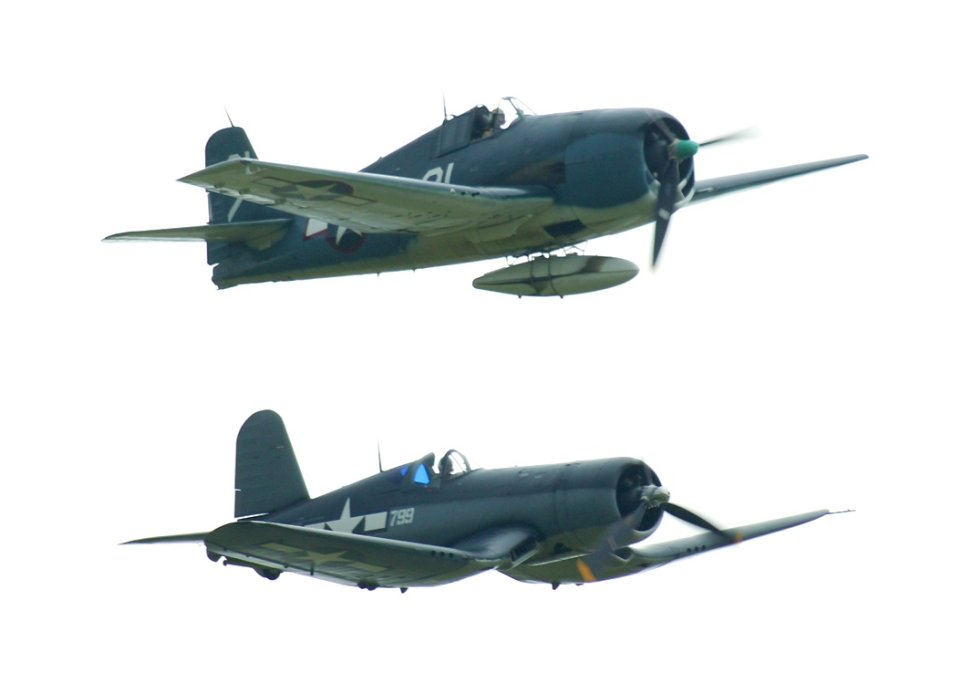 |

|
This Russian MiG-17 "Fresco" was a development of the famous MiG 15 "Fagot".
This one has its afterburner lit up, and banking sharply like this it's
an impressive sight.
|
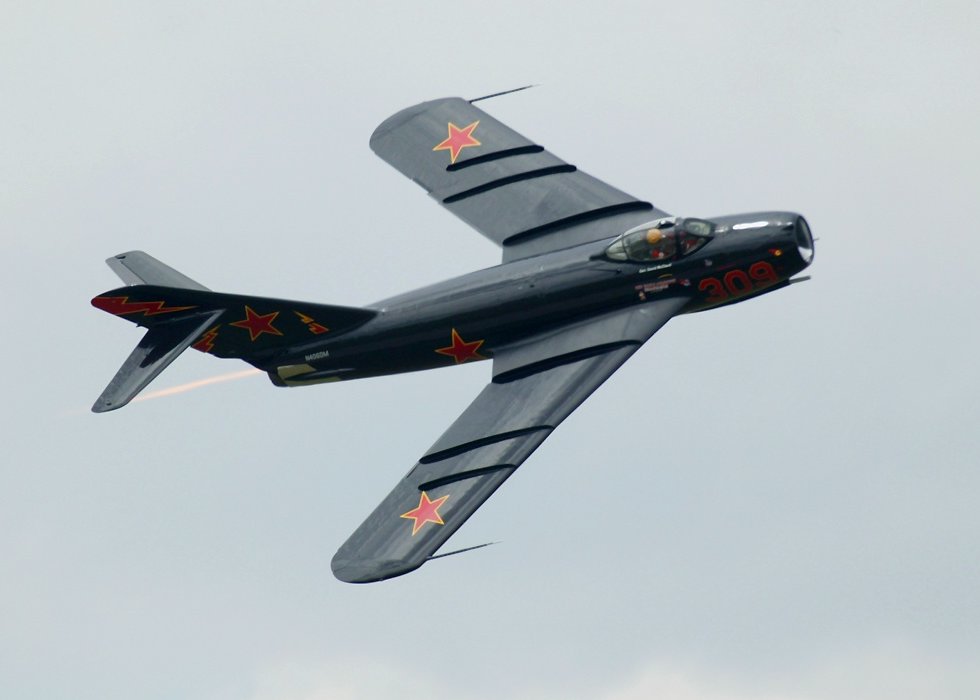 |

|
Another rare bird, a P-38 Lightning. These fighters didn't do particularly
well in the European theater of operations during world war two, largely
because German planes could recognize it from far off and outdive it, making
it very difficult for the P-38 to catch them. In the Pacific,
however, the P-38 had great success, and America's greatest ace of world
war two, Richard Bong, made all of his kills in a P-38. Forewarned
by intercepted and decoded Japanese communications, and equipped with long-range
fuel tanks, P-38s were also responsible for killing the head of the Japanese
navy, Admiral Yamamoto, by shooting down his transport plane.
|
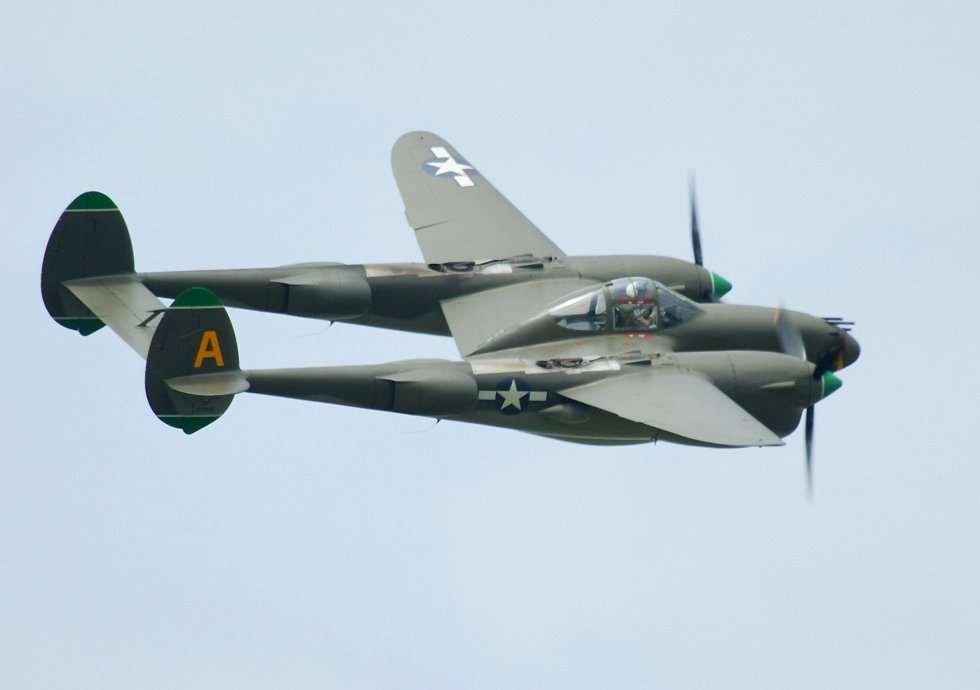 |

|
The highlight of the show - a P-39 Airacobra. Depending on which
page of this
plane's website you believe, this is the only airworthy Airacobra,
or there are two others. Like the P-38 Lightning, American pilots
didn't have much success in Europe with the P-39, however the Russians bought
huge numbers of them and used them very successfully in a ground attack
role. Because it was built around a very large 37mm cannon
which fired through the propeller hub, the P-39 was very unusual in having
its engine mounted behind the pilot, with a long driveshaft connecting
the engine to the propeller.
|
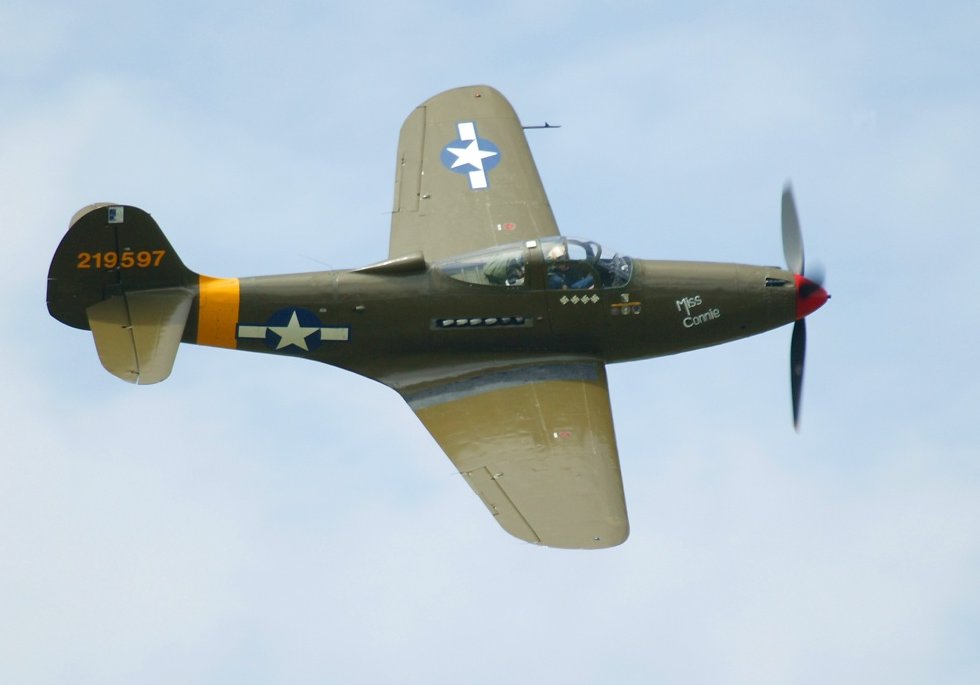
|

|
Is it just a coincidence that this Canadian Lancaster bomber is the only plane
on this page which is flying from right to left? Well, somehow
I don't think so. On Saturday I arrived at the airshow late in the
morning, but thankfully just in time to see the very good display put on
by the Lancaster crew as they banked left and right past the spectators.
The news on the grapevine on Sunday was that they were reprimanded by the
airshow organizers, so their display that day was far more sedate.
This particular Lancaster is one of only two flying, the other one belongs
to the Battle
of Britain memorial flight based in the UK. The Canadian
Lancaster was meant to be at the 2002 Willow Run airshow, but it had a
taxying accident and hit a parked aircraft, putting it out of operation
for a while.
|
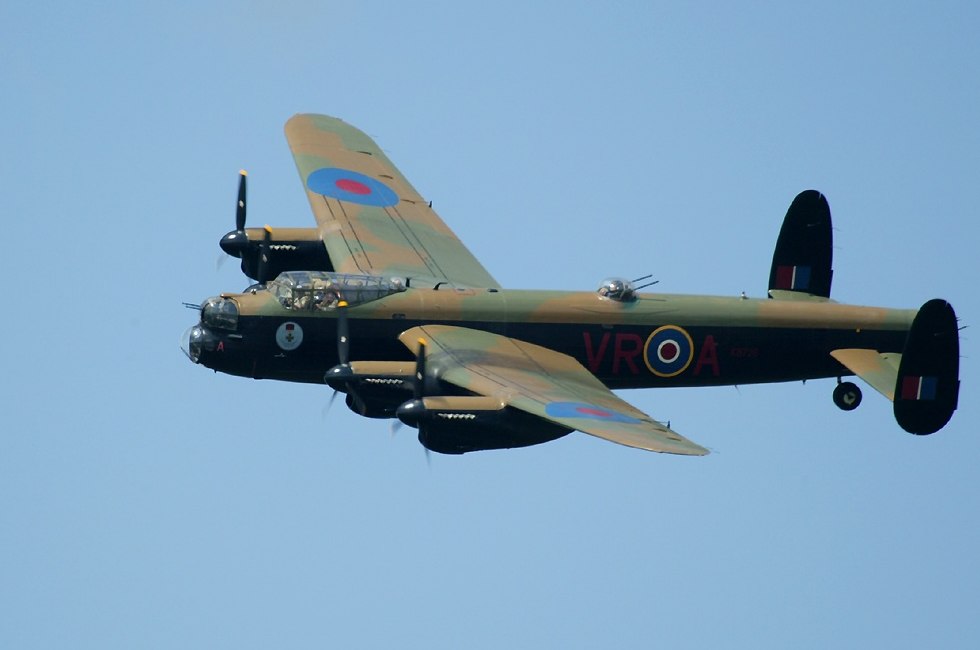 |

|
Sigh, back to planes pointing right! Another big bird, this time
a C-121 Constellation, the US military version of the Constellation airliner.
The Constellation would probably beat out any challenge as the most attractive
propeller-driven airliner ever built, and perhaps even the most attractive
airliner, period. The curved top and bent nose make it look
as sleek as a greyhound, and it performs just as well.
|
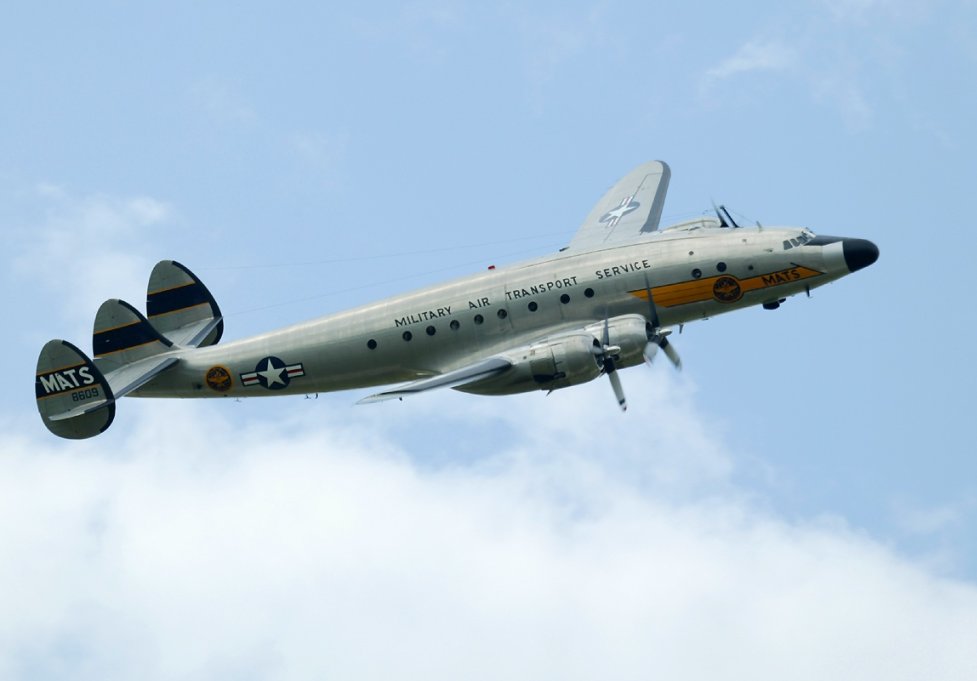 |

|
This is the only B-24 Liberator bomber in the world which still flies, owned
by the Collings Foundation. The Commemorative Air Force operates
an LB-30 Liberator which was damaged during its wartime delivery flight
and converted to a cargo plane without gun turrets. The B-24
Liberator was built in far greater numbers than its more famous cousin
the B-17 Flying Fortress - 24,000 Liberators compared to 12,700 Flying Fortresses.
However, it was the B-17 which captured the public's imagination and because
of this, and because the B-24 had a very narrow wing and was therefore harder
to fly, fewer B-24s survived after the war than B-17s.
|
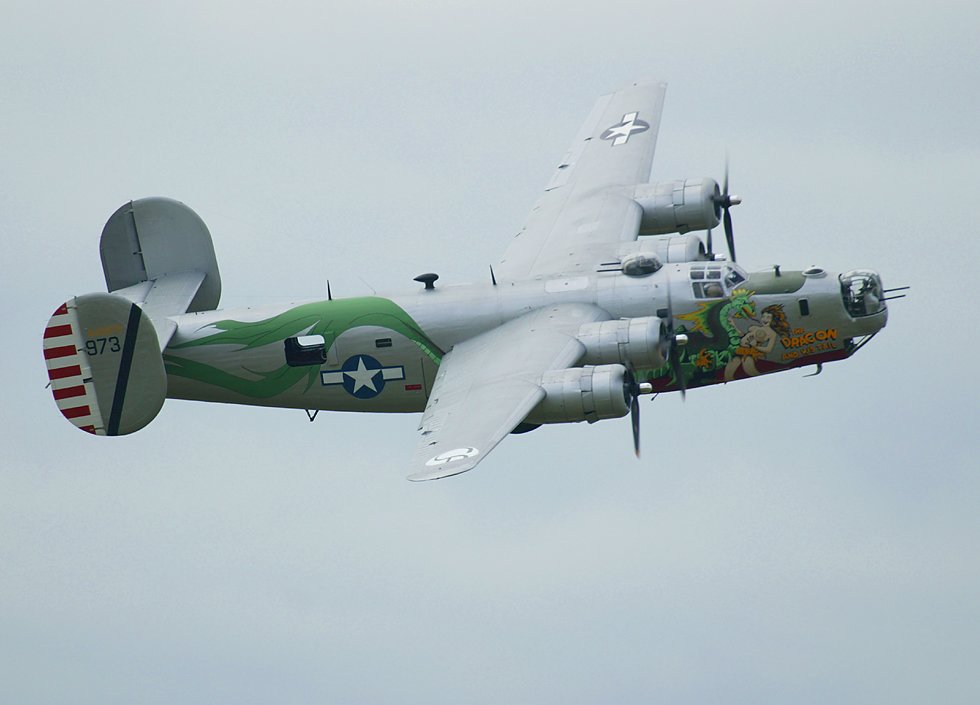
|

|
So that's why there were four Flying Fortresses at this airshow and only one
Liberator! The folks at the Yankee Air Museum who organize
this show have done a good job of collecting a large number of aircraft
of a particular type at the last few shows; last year it was the B25 Mitchell
bomber and this year it was the Flying Fortress. This is the
first time I've attended a show with so many B-17s. Unfortunately
they flew them all in "V" formation on Friday when not many people were
around, including myself, so I didn't get to see what would have been an
awesome sight. This is the museum's own Flying Fortress, "Yankee
Lady", which flew spectators during the show for $400 each.
|
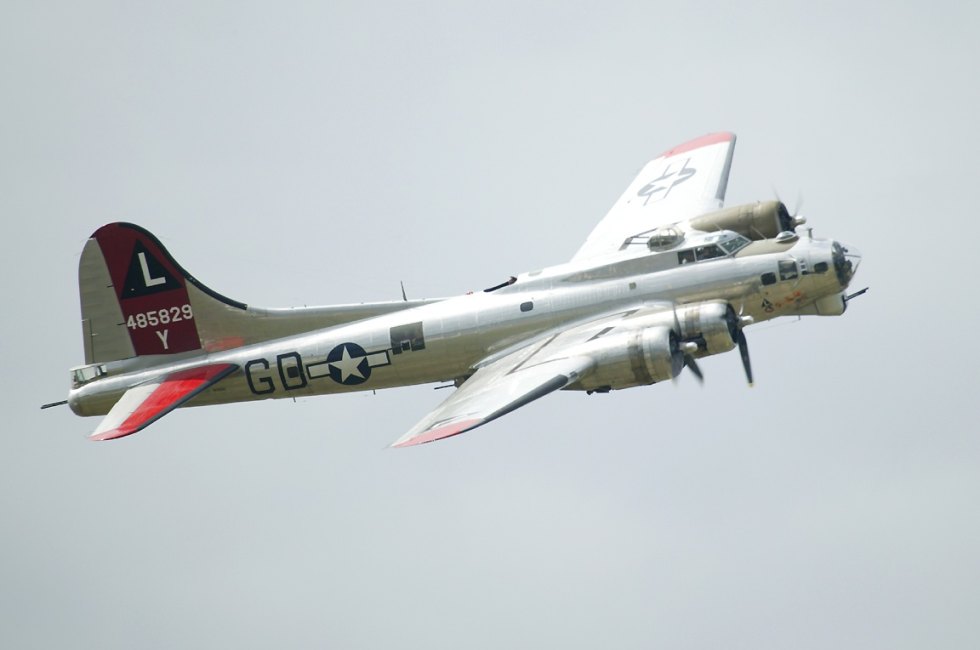 |

|
This plane is painted
in the colors of the most famous Flying Fortress of world war two - the
"Memphis Belle", the first B-17 to complete its tour of duty of 25 combat
missions. The Memphis Belle was the subject of a world war
two documentary, and a 1990 movie which recounted its feat.
As an earlier model B-17F, the Memphis Belle lacks the "chin turret" under
the nose of B-17Gs like Yankee Lady. The B-17F could carry 8,000
pounds of bombs, twice the capacity of the B-17E, but at a cost of flying
70 miles per hour slower, making it easier for enemy aircraft and artillery
to shoot down. As partial compensation for this, the B-17F had
two more machine guns than the B-17E, and the 0.30 inch machine gun carried
by the B-17E was upgraded to a 0.50 inch machine gun.
|
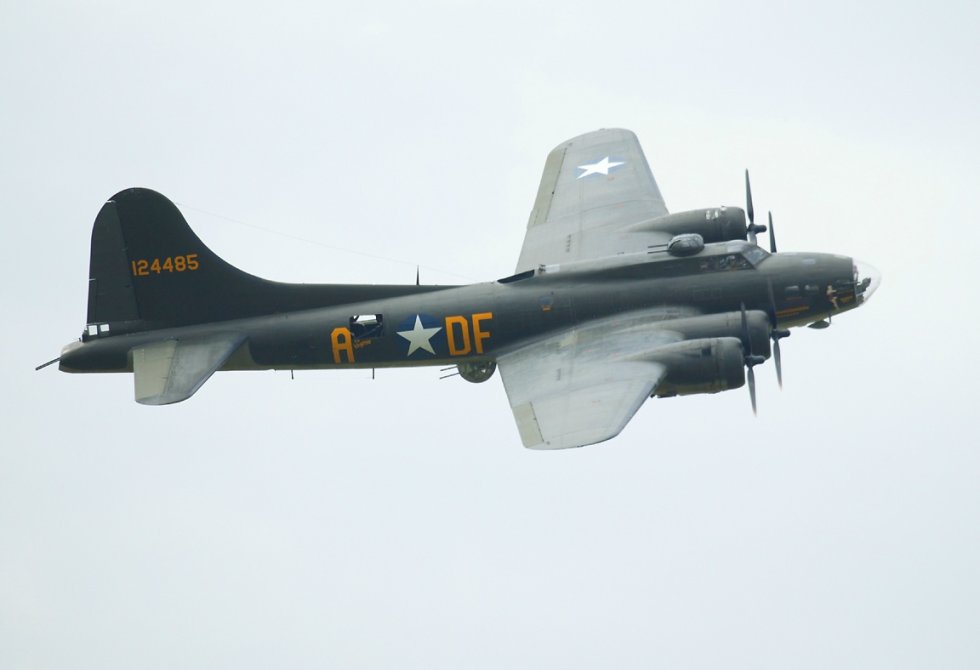 |

|
This B-17G is owned
by the Collings Foundation and carries the rather unimaginative name "Nine
O Nine", a reference to the registration number carried on its tail.
|
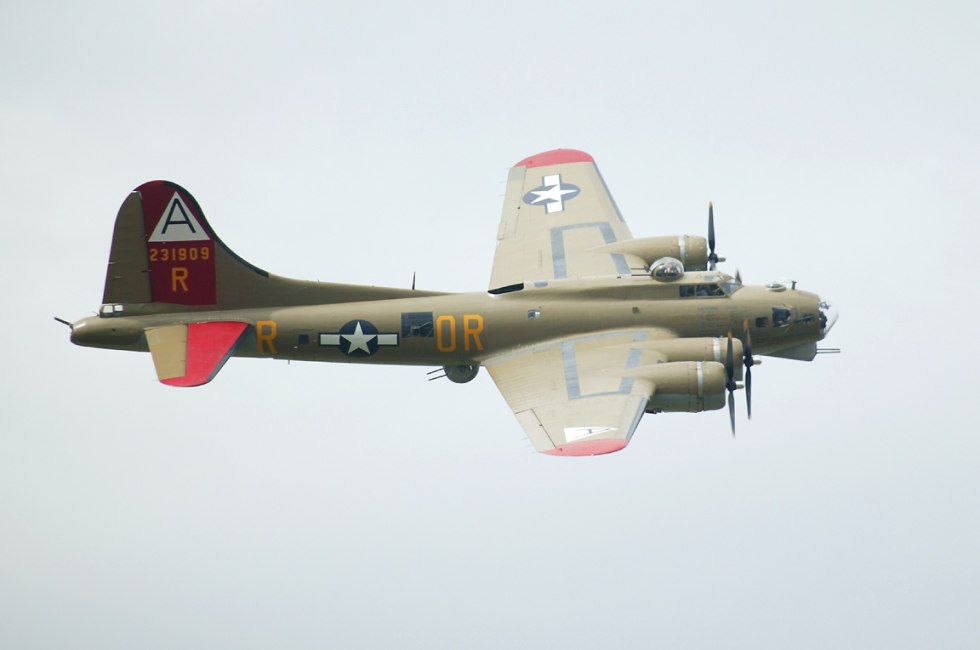 |

|
The Commemorative Air Force's B-17G "Sentimental Journey" served in the Pacific during the
war, later becoming an air-sea rescue plane and finally a fire-fighting
"borate bomber" in California.
|
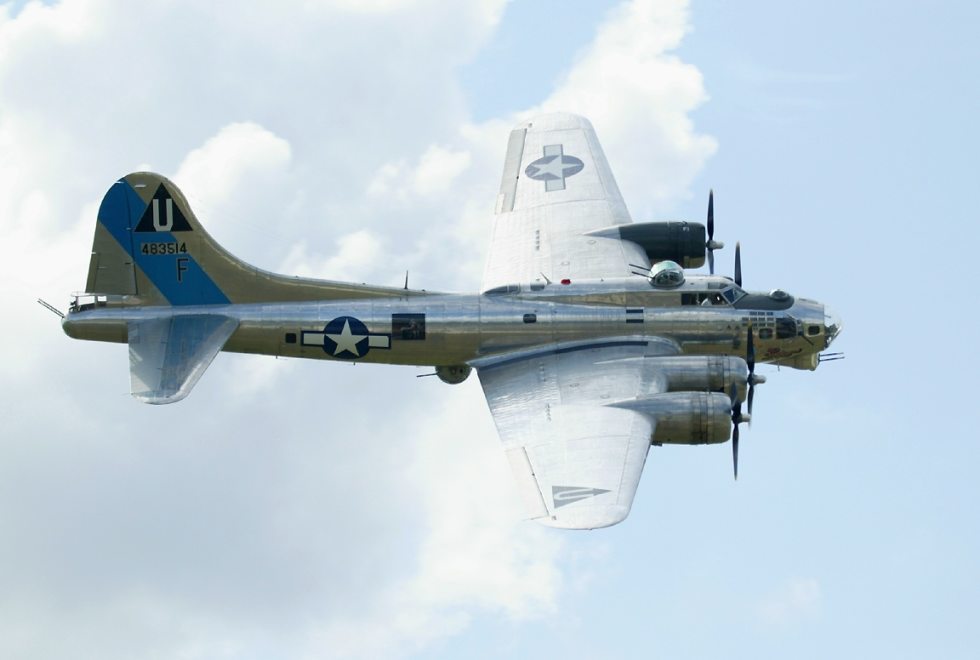 |
See highlights of the Yankee Air Museum "Thunder Over Michigan" airshow in
2005,
2006 and
2007.












